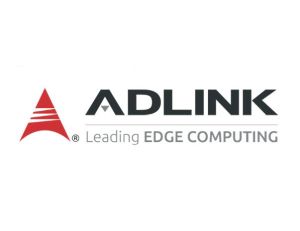The COM-HPC Altra is the world’s first 80-core COM-HPC server type module that eliminates power-performance limitations. The new server type module targets edge platforms that reliably and predictably process the most compute intensive workloads, eliminating bottlenecks and restrictions typically caused by memory caches and system memory limits on edge devices. The COM-HPC Altra core is an Ampere Altra SoC (system on a chip) based on the Arm Neoverse N1 architecture, providing premium performance within a relatively modest thermal envelope, lower TCO compared to incumbent x86 design, and significantly lower power consumption.
The COM-HPC Altra delivers an unprecedented performance-power ratio of up to 80 Arm v8.2 64-bit cores running at up to 2.8 GHz  with only 175 W. The COM-HPC Altra heterogeneous architecture also includes three PCIe Gen4 x16 lanes with CCIX (cache coherent interconnect for accelerators) protocol paired with compatible GPUs and FPGA-based accelerators that provide a homogenous architecture and valuable compute power for demanding workloads, such as real-time/near real-time applications including autonomous driving, stationery and mobile robotics, medical imaging and robotic surgery, test and measurement, and video broadcasting. In addition, it is excellently suited as a native arm64 development and compilation system for smaller, less powerful arm64 designs.
with only 175 W. The COM-HPC Altra heterogeneous architecture also includes three PCIe Gen4 x16 lanes with CCIX (cache coherent interconnect for accelerators) protocol paired with compatible GPUs and FPGA-based accelerators that provide a homogenous architecture and valuable compute power for demanding workloads, such as real-time/near real-time applications including autonomous driving, stationery and mobile robotics, medical imaging and robotic surgery, test and measurement, and video broadcasting. In addition, it is excellently suited as a native arm64 development and compilation system for smaller, less powerful arm64 designs.
“By teaming up with Ampere and Arm and using their Neoverse N1-based 80 core Ampere Altra SoC, our high performance-per-watt COM-HPC Altra architecture allows our strategic partners and customers to process data intensive workloads at the edge without worrying about big upfront investments, hardware overheating, or ongoing maintenance costs,” says Alex Wang, ADLINK’s product manager of embedded boards and modules.
Ampere Altra-based systems are the first, and so far the only, with Arm SystemReady SR certification; ADLINK is also working closely with Ampere and Arm to certify the COM-HPC Altra prototype system as a SystemReady SR device.
COM-HPC Altra key features:
● Arm Neoverse N1-based architecture
● Scalable, from 32 to 80 Arm v8.2 64-bit cores (60 to 175 W)
● 768 GB DDR4 with six individual memory channels for demanding workloads
● 64x PCIe Gen4 lanes, CCIX for heterogeneous computing
● edk2 bootloader with TianoCore / UEFI
● Arm SystemReady SR: ready to install stock aarch64 Ubuntu 20.04, Yocto Linux
● Gigabit Ethernet support: 4x 10 GbE and 1x GbE
Arm today announced the launch of its new software architecture and reference implementation to accelerate the software-defined future of automotive. In conjunction with Arm, ADLINK’s standard COM-HPC Altra prototyping system can be used by automakers to standardize their future silicon on Arm. In addition to selecting the right silicon as a top priority, automakers must move away from hundreds of simultaneous discrete ECUs, collapsing the in-vehicle compute architecture into just a few “domain controllers.” This evolution will lead to one computer per major class of function (such as ADAS, infotainment) at first, to eventually one computer running all functions, with “mixed criticality” on a single powerful Arm SoC.
Ampere Altra is the ideal target and development system for these environments, due to automakers’ ability to develop and test with the Arm N1 Neoverse based platform while waiting for their next generation IPs from silicon platforms – which also brings cloud technologies and best practices to the desktop and vehicle (for example CI/CD, virtualization, security). This hardware is the foundation of the reference platform from the Arm-led open-source stack for software defined vehicle and autonomous
driving.
Samples of the prototype system have already shipped to many automakers and Tier 1s, and ADLINK is taking pre-orders now. Find more information on COM-HPC Altra here.
ADLINK Technology, 400 TradeCenter, Suite 5900, Woburn, MA 01801, +1-781-569-5819, Sales: +1-781-995-4917, ist_info@adlinktech.com, www.adlinktech.com/

